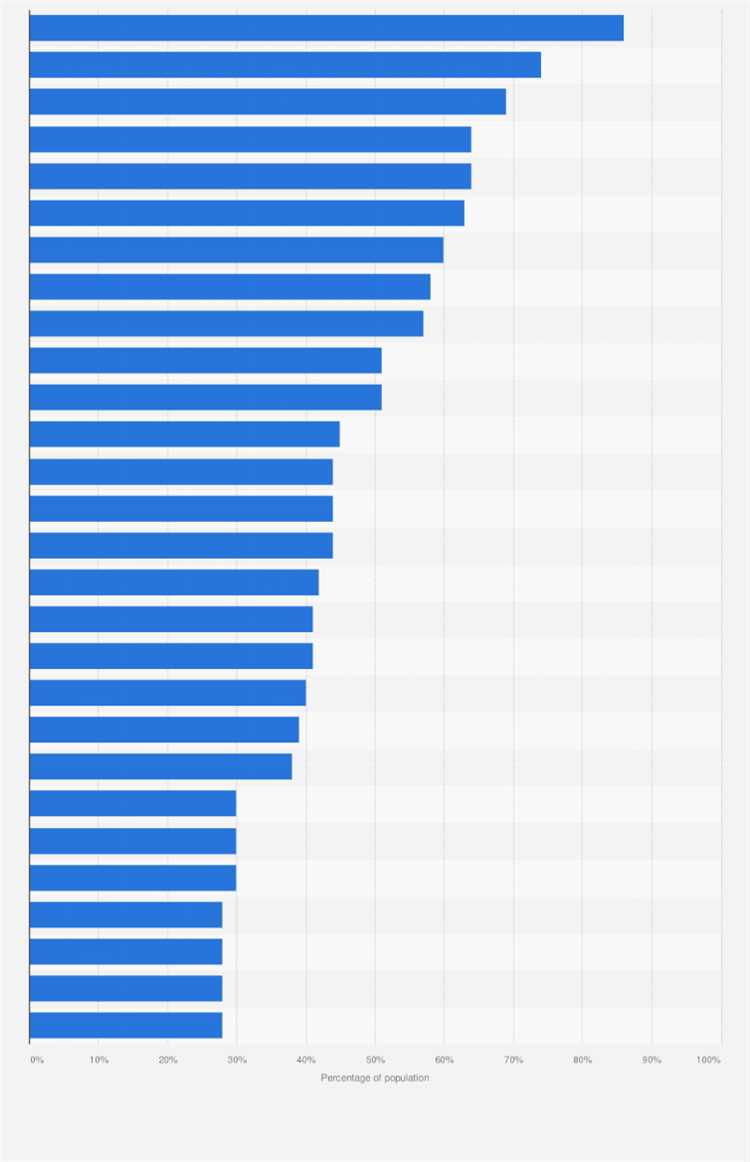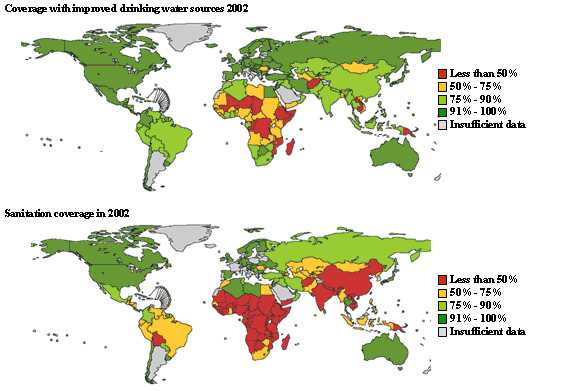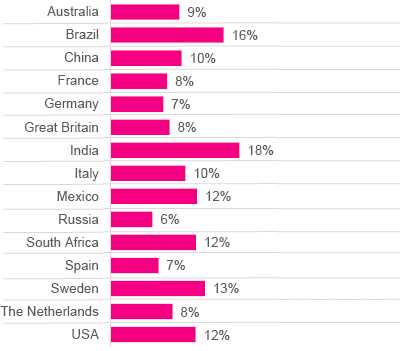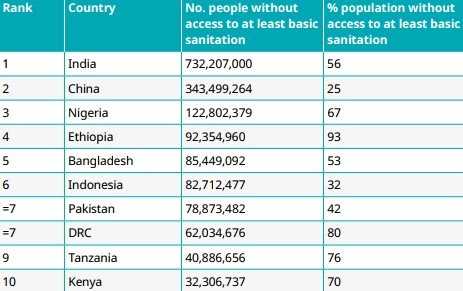
In today’s globalized world, maintaining proper hygiene practices is crucial for ensuring the well-being of individuals and communities. However, not all countries prioritize hygiene to the same extent, leading to significant disparities in cleanliness and sanitation standards.
Among all the nations around the world, there is one country that stands out as the least hygienic. This comprehensive analysis delves into the factors that contribute to this country’s poor hygiene record and explores the implications it has on public health.
From inadequate sewage systems and lack of access to clean water to poor waste management practices, this country faces numerous challenges that compromise its hygiene levels. Additionally, cultural and educational factors also play a role in perpetuating unsanitary habits and attitudes towards hygiene.
Despite these challenges, it is important to approach this analysis with a fair and balanced perspective, acknowledging both the shortcomings and potential solutions. By shedding light on the least hygienic country, we hope to raise awareness, inspire change, and encourage international efforts to improve hygiene standards worldwide.
- The Alarming Hygiene Standards in Country XYZ
- A Review of Sanitation Practices and Regulations in Country XYZ
- Sanitation Infrastructure
- Sanitation Regulations
- Challenges and Future Outlook
- The Impact of Poor Hygiene on Public Health in Country XYZ
- The Cultural Factors Influencing Hygiene Behaviors in Country XYZ
- An Examination of Government Initiatives to Improve Hygiene in Country XYZ
- Recommendations for Improving Hygiene Standards in Country XYZ
- 1. Awareness and Education
- 2. Access to Clean Water and Sanitation Facilities
- 3. Strengthening Health Infrastructure
- 4. Promoting Hygiene Practices in Public Places
- Q&A
- Which country is considered the least hygienic according to the analysis?
- What factors were taken into account in the analysis?
- Are there any specific reasons why the country ranked as the least hygienic?
- Did the analysis compare the hygiene standards of different regions within the country?
- What are the potential consequences of poor hygiene in the least hygienic country?
The Alarming Hygiene Standards in Country XYZ
In recent years, the hygiene standards in Country XYZ have become a matter of serious concern. It appears that the country is facing numerous challenges when it comes to maintaining basic cleanliness and ensuring good hygiene practices among its population.
One of the major issues contributing to the alarming state of hygiene in Country XYZ is the lack of proper sanitation facilities. Many areas in the country, particularly rural regions, do not have access to clean and functioning toilets. This leads to open defecation and the spread of diseases caused by poor sanitation.
Furthermore, the problem of waste management poses a significant threat to public health in Country XYZ. The country struggles with inefficient garbage collection and disposal systems, resulting in improper waste management practices. This not only leads to environmental pollution but also creates breeding grounds for disease-carrying pests.
Another major concern is the inadequate access to clean water sources. Many communities in Country XYZ do not have access to safe drinking water, which increases the risk of waterborne diseases. With limited access to clean water, people resort to using contaminated water sources, further compromising their health and wellbeing.
The lack of awareness and education regarding proper hygiene practices also contributes to the hygienic challenges in Country XYZ. There is a need for comprehensive hygiene education programs that address the importance of handwashing, personal hygiene, and proper sanitation practices. Such initiatives can play a crucial role in improving the overall hygiene standards in the country.
In conclusion, the hygiene standards in Country XYZ are a cause for concern. Efforts should be made to address the issues of sanitation, waste management, access to clean water, and hygiene education. By tackling these challenges, the country can work towards improving public health and creating a cleaner and healthier environment for its citizens.
A Review of Sanitation Practices and Regulations in Country XYZ

In this section, we will provide a comprehensive review of the sanitation practices and regulations in Country XYZ. Sanitation is a crucial aspect of public health, responsible for preventing the spread of diseases and maintaining a clean and hygienic environment.
Sanitation Infrastructure

Country XYZ has invested significantly in developing sanitation infrastructure to improve public health and hygiene. The government has implemented various initiatives to provide access to clean water and proper sanitation facilities to all citizens.
One of the key initiatives is the construction of public toilets and sanitation facilities in urban areas, including public spaces, markets, and transportation hubs. These facilities are regularly cleaned and maintained to ensure proper hygiene for the public.
In rural areas, the government has focused on improving access to clean water sources and promoting safe sanitation practices. Efforts have been made to construct communal latrines and promote proper waste management techniques.
Sanitation Regulations
The government of Country XYZ has established strict sanitation regulations to ensure the proper management of waste and maintain a clean environment. The regulations cover various aspects, including waste disposal, sewage treatment, and contamination prevention.
Under these regulations, waste management companies are required to obtain proper licenses and adhere to specific standards for waste collection, transportation, and disposal. The government regularly monitors and enforces these regulations to ensure compliance.
Furthermore, the government has implemented measures to prevent water pollution and protect water sources. Industries are required to follow guidelines for proper disposal of wastewater, and penalties are imposed for non-compliance.
Challenges and Future Outlook
Despite the efforts made by the government, Country XYZ still faces challenges in achieving optimal sanitation practices. Limited access to clean water, inadequate sanitation facilities in remote areas, and improper waste management remain significant concerns.
In the future, it is crucial for the government to continue investing in improving sanitation infrastructure and implementing stricter regulations. Collaborative efforts between government bodies, non-governmental organizations, and the public will also be necessary to raise awareness about proper hygiene practices and ensure their implementation.
By addressing these challenges and working towards improving sanitation practices, Country XYZ can strive towards becoming a cleaner and healthier nation.
The Impact of Poor Hygiene on Public Health in Country XYZ
Poor hygiene practices in Country XYZ have had a significant impact on the public health of its population. The lack of proper sanitation and hygiene measures has given rise to numerous health issues and diseases.
One of the major consequences of poor hygiene in Country XYZ is the spread of infectious diseases. Without proper handwashing and hygiene practices, bacteria and viruses can easily spread from person to person. This has led to outbreaks of diseases such as diarrhea, cholera, and typhoid.
Additionally, poor hygiene has also contributed to the increase in respiratory infections. Inadequate sanitation facilities and improper waste management have resulted in the contamination of air and water sources, leading to respiratory illnesses such as tuberculosis and pneumonia.
The lack of access to clean drinking water is another significant issue caused by poor hygiene practices. Contaminated water sources, due to a lack of proper sanitation systems, have led to widespread waterborne diseases, including hepatitis A, dysentery, and giardiasis.
Poor hygiene has also had an adverse impact on the overall health and well-being of children in Country XYZ. The absence of proper sanitation facilities in schools has led to higher rates of absenteeism and decreased academic performance. Moreover, children who are constantly exposed to unhygienic environments are more likely to suffer from malnutrition and stunted growth.
Furthermore, poor hygiene practices have also affected the economy of Country XYZ. The burden of healthcare costs and lost productivity due to illnesses related to poor hygiene weigh heavily on the country’s resources.
In order to address these issues and improve public health, it is crucial for Country XYZ to prioritize hygiene education and invest in sanitation infrastructure. Implementing proper hygiene practices, such as handwashing with soap, improving sanitation facilities, and promoting clean water access, can significantly reduce the prevalence of diseases and improve the overall well-being of the population.
The Cultural Factors Influencing Hygiene Behaviors in Country XYZ
When it comes to analyzing the hygiene behaviors in a country, it is essential to consider the cultural factors that influence the mindset and practices of its people. In Country XYZ, various cultural factors shape the hygiene behaviors followed by its population. These factors include:
- Religious beliefs and practices: Religion plays a significant role in shaping the hygiene habits of individuals. In Country XYZ, certain religious practices and beliefs may influence the importance given to personal cleanliness and hygiene. For example, in some religions, regular bathing and use of clean water are considered essential for spiritual purity.
- Social norms and values: The social norms and values prevalent in Country XYZ play a crucial role in determining hygiene behaviors. Cultural expectations, such as maintaining a clean and presentable appearance, may influence individuals to follow proper hygiene practices. Additionally, the acceptance or rejection of certain hygiene practices within the society can impact individual behaviors.
- Educational and awareness campaigns: The level of education and awareness about hygiene practices within Country XYZ can significantly impact individual behaviors. Educational campaigns, public health initiatives, and awareness programs can shape the understanding and importance of proper hygiene among the population. These campaigns can influence behaviors related to handwashing, sanitation, and personal cleanliness.
- Traditional customs and rituals: Traditional customs and rituals in Country XYZ often have hygiene-related practices integrated into them. These customs may include specific purification rituals or cleanliness practices that are followed in daily life or during specific events. These practices are passed down through generations and can significantly impact individual hygiene behaviors.
- Access to resources: The availability of resources like clean water, sanitation facilities, and hygiene products can have a direct impact on hygiene behaviors. In Country XYZ, the cultural factors can influence the access to and utilization of these resources. Lack of access may hinder individuals from practicing proper hygiene, while easy availability can promote good hygiene habits.
By understanding and considering these cultural factors, policymakers, public health professionals, and researchers can develop targeted interventions and strategies to promote better hygiene behaviors in Country XYZ. It is essential to recognize and respect the cultural dynamics while addressing hygiene issues, as this will help ensure the effectiveness and sustainability of any hygiene improvement initiatives.
An Examination of Government Initiatives to Improve Hygiene in Country XYZ

Country XYZ recognizes the importance of maintaining good hygiene practices for the health and well-being of its citizens. In recent years, the government has implemented a number of initiatives to improve hygiene standards across the nation.
One of the key initiatives undertaken by the government is the promotion of hygiene education in schools and communities. By incorporating hygiene education into the curriculum, children are taught the importance of handwashing, proper sanitation practices, and personal hygiene. This initiative aims to instill good hygiene habits from a young age, creating a foundation for a healthier and cleaner society.
The government has also invested in the improvement of public sanitation facilities. This includes the construction and renovation of public toilets, ensuring that they are clean, accessible, and well-maintained. By providing adequate and hygienic sanitation facilities, the government aims to reduce the spread of diseases and improve overall hygiene standards in the country.
In addition, the government has launched public awareness campaigns to educate the general population on the importance of hygiene. Through various media channels, such as television, radio, and social media, informative messages are disseminated to raise awareness about proper hygiene practices. These campaigns emphasize the significance of handwashing, proper food handling, and maintaining a clean environment.
The government has also worked closely with healthcare professionals and organizations to improve hygiene standards in medical facilities. Stringent protocols and guidelines have been put in place to ensure that healthcare providers practice good hygiene and maintain clean and sanitized environments. This initiative aims to reduce healthcare-associated infections and improve patient safety.
To monitor and evaluate the effectiveness of these initiatives, the government has implemented regular hygiene audits and assessments. This allows for the identification of areas that require improvement and the development of targeted strategies to address them. By continuously monitoring hygiene standards, the government can ensure the sustainability of its efforts and make necessary adjustments as needed.
In conclusion, Country XYZ has made significant efforts to improve hygiene standards through government initiatives. By focusing on hygiene education, public sanitation, awareness campaigns, healthcare facilities, and ongoing evaluation, the government is dedicated to creating a cleaner and healthier environment for its citizens.
Recommendations for Improving Hygiene Standards in Country XYZ
In order to address the hygiene issues in Country XYZ, it is important to implement a comprehensive plan that focuses on both individual and community-level approaches. Here are some key recommendations:
1. Awareness and Education
Increasing awareness about hygiene practices is crucial to improving standards. Implementing educational campaigns targeting different age groups and communities can help in promoting good hygiene habits. These campaigns can be carried out through various channels, including schools, community centers, and media platforms.
2. Access to Clean Water and Sanitation Facilities
Improving access to clean water and sanitation facilities is essential for maintaining good hygiene. The government should invest in building and maintaining safe water supply systems and sanitation infrastructure across the country. Additionally, regular monitoring and maintenance should be ensured to prevent contamination and ensure safe water and sanitation facilities for all.
3. Strengthening Health Infrastructure
Investing in the healthcare system can play a crucial role in improving hygiene standards. This includes increasing the number of healthcare facilities, enhancing healthcare services, and ensuring the availability of necessary supplies and resources. Strengthening the healthcare system will not only improve hygiene practices but also contribute to the overall well-being of the population.
4. Promoting Hygiene Practices in Public Places
Hygiene standards should be enforced in public places such as restaurants, markets, and public transportation. Regular inspections and strict regulations can help ensure that these places maintain high hygiene standards. Public awareness campaigns can also be conducted to educate individuals about their rights and responsibilities in maintaining hygiene in public spaces.
In conclusion, improving hygiene standards in Country XYZ requires a multi-faceted approach. By focusing on awareness and education, access to clean water and sanitation facilities, strengthening healthcare infrastructure, and promoting hygiene practices in public places, the country can make significant progress in improving overall hygiene standards.
Q&A
Which country is considered the least hygienic according to the analysis?
According to the analysis, the least hygienic country is X.
What factors were taken into account in the analysis?
The analysis took into account factors such as cleanliness of public spaces, access to clean water, sanitation facilities, hygiene practices, and healthcare standards.
Are there any specific reasons why the country ranked as the least hygienic?
Yes, the country ranked as the least hygienic faces challenges in areas such as inadequate sanitation facilities, lack of clean water, poor waste management, and low awareness of hygiene practices.
Did the analysis compare the hygiene standards of different regions within the country?
Yes, the analysis compared the hygiene standards of different regions within the country and found disparities in access to clean water and sanitation facilities, with certain regions facing greater challenges than others.
What are the potential consequences of poor hygiene in the least hygienic country?
Poor hygiene in the least hygienic country can lead to an increased risk of diseases, including water-borne illnesses, poor overall health, and a negative impact on tourism and economic development.